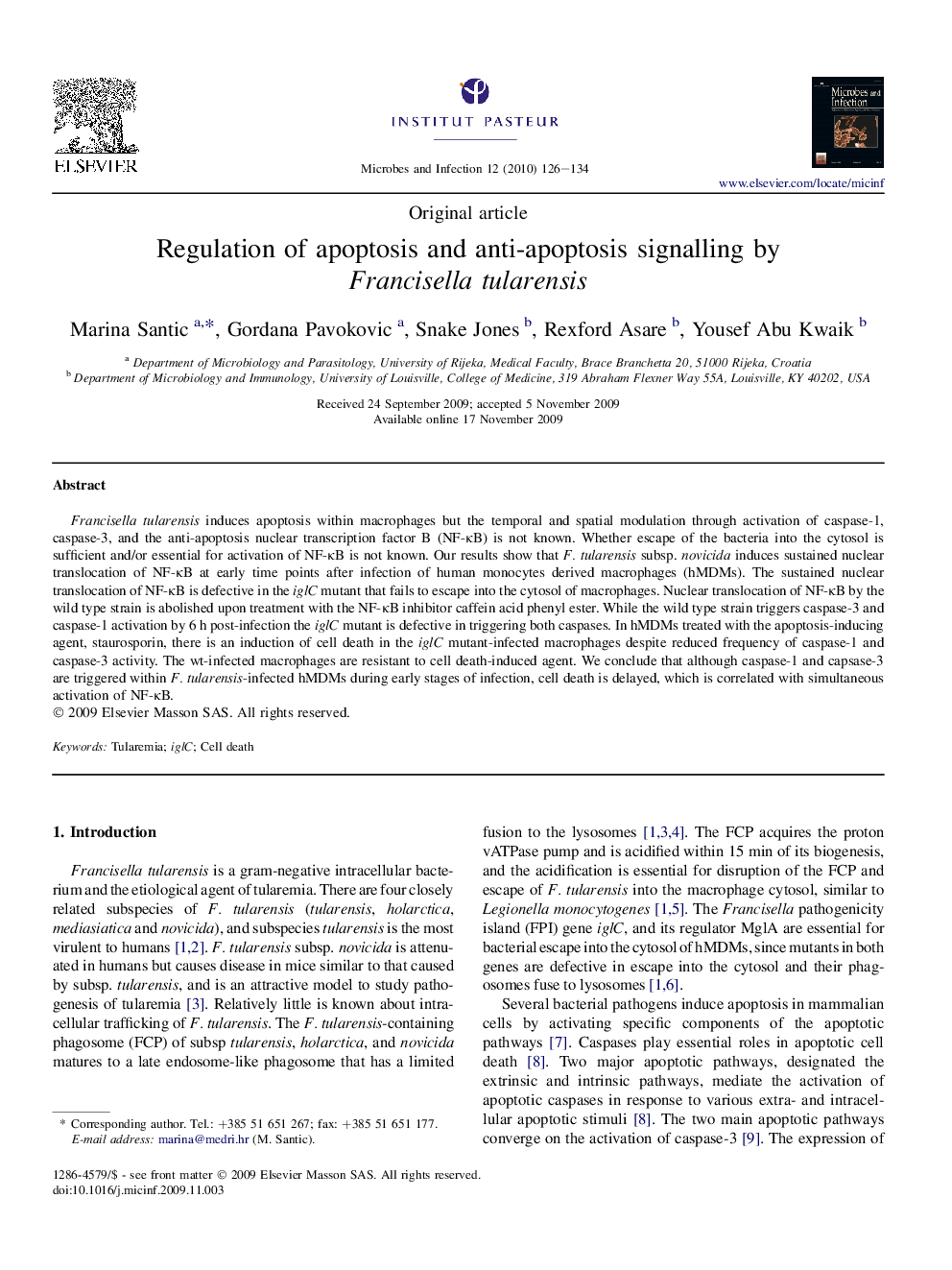| کد مقاله | کد نشریه | سال انتشار | مقاله انگلیسی | نسخه تمام متن |
|---|---|---|---|---|
| 3415268 | 1224951 | 2010 | 9 صفحه PDF | دانلود رایگان |

Francisella tularensis induces apoptosis within macrophages but the temporal and spatial modulation through activation of caspase-1, caspase-3, and the anti-apoptosis nuclear transcription factor B (NF-κB) is not known. Whether escape of the bacteria into the cytosol is sufficient and/or essential for activation of NF-κB is not known. Our results show that F. tularensis subsp. novicida induces sustained nuclear translocation of NF-κB at early time points after infection of human monocytes derived macrophages (hMDMs). The sustained nuclear translocation of NF-κB is defective in the iglC mutant that fails to escape into the cytosol of macrophages. Nuclear translocation of NF-κB by the wild type strain is abolished upon treatment with the NF-κB inhibitor caffein acid phenyl ester. While the wild type strain triggers caspase-3 and caspase-1 activation by 6 h post-infection the iglC mutant is defective in triggering both caspases. In hMDMs treated with the apoptosis-inducing agent, staurosporin, there is an induction of cell death in the iglC mutant-infected macrophages despite reduced frequency of caspase-1 and caspase-3 activity. The wt-infected macrophages are resistant to cell death-induced agent. We conclude that although caspase-1 and capsase-3 are triggered within F. tularensis-infected hMDMs during early stages of infection, cell death is delayed, which is correlated with simultaneous activation of NF-κB.
Journal: Microbes and Infection - Volume 12, Issue 2, February 2010, Pages 126–134